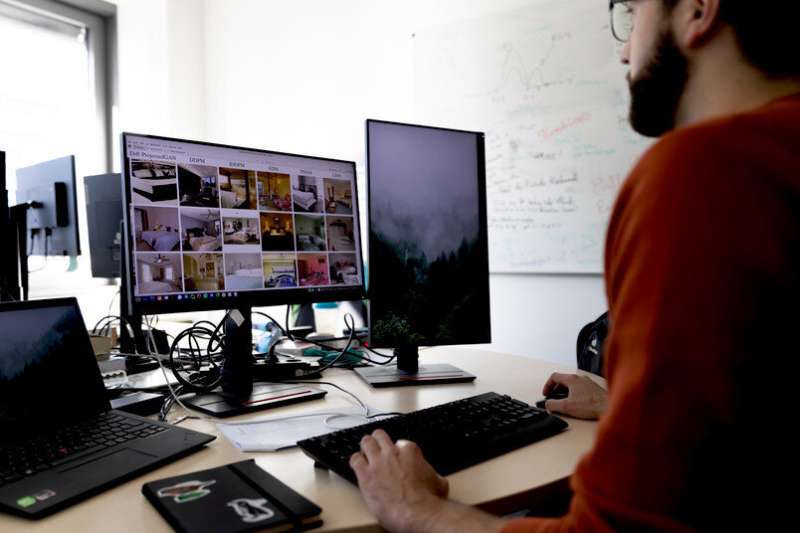This article has been reviewed according to Science X's editorial process and policies. Editors have highlighted the following attributes while ensuring the content's credibility:
fact-checked
trusted source
proofread
Deep fakes: How artificially generated images give themselves away

All it takes is a simple text command: in no time at all, artificial intelligence can generate an image that looks like a real photo and is indistinguishable from it to human eyes. Fascinating though it is, it essentially casts doubt on the authenticity of every image.
For his Ph.D. thesis at the Faculty of Computer Science at Ruhr University Bochum, Jonas Ricker has specialized in the technical recognition of fake images. He's looking for ways to distinguish artificially generated pictures and videos from real ones. "Rubin," the science magazine of Ruhr University Bochum, Germany, features an article on his project.
To Gaussian noise and back again
The so-called diffusion model for image generation is currently very popular due to the Stable Diffusion application. "The underlying principle may at first sound surprising," says Ricker. "A real image is diffused step by step by successive addition of Gaussian noise—hence the name. A few hundred steps later, the image information is completely removed and the image is nothing but noise. The purpose of the model is now to reverse this process in order to reconstruct the original image—a tricky challenge."
The key is not to predict the image directly, but to process it step by step, in the same way that the noise had been added. Armed with a sufficient amount of training data, the model can learn to make a noisy image a tiny bit less noisy. Through repeated application, completely new images can then be created from random noise.
Exposing fake profiles on social media
"Already, the diffusion model delivers very good results in generating deceptively real images and it will continue to improve going forward," believes Ricker. This will make it even more difficult to distinguish real images from artificially generated ones.
Ricker is currently testing various approaches for distinguishing images generated by the model from real photos. The distinction between real and fake images is important not only to expose fake news, for example such that are delivered in the form of videos, but also to expose fake profiles on social media. Such profiles are used on a massive scale to manipulate the public opinion on political issues, for example.
"This is exactly what the CASA Cluster of Excellence is about: exposing large-scale attackers such as governments or intelligence services that have the means to use deep fakes to disseminate propaganda," says Ricker.

















